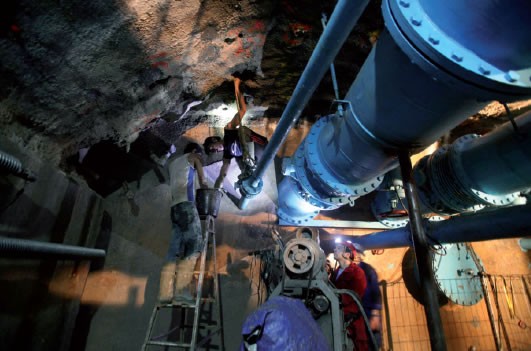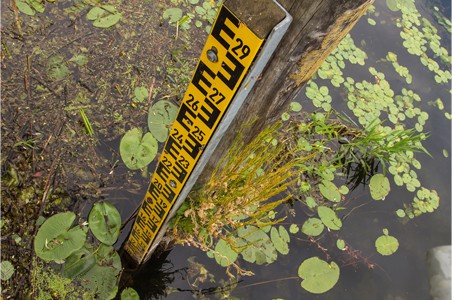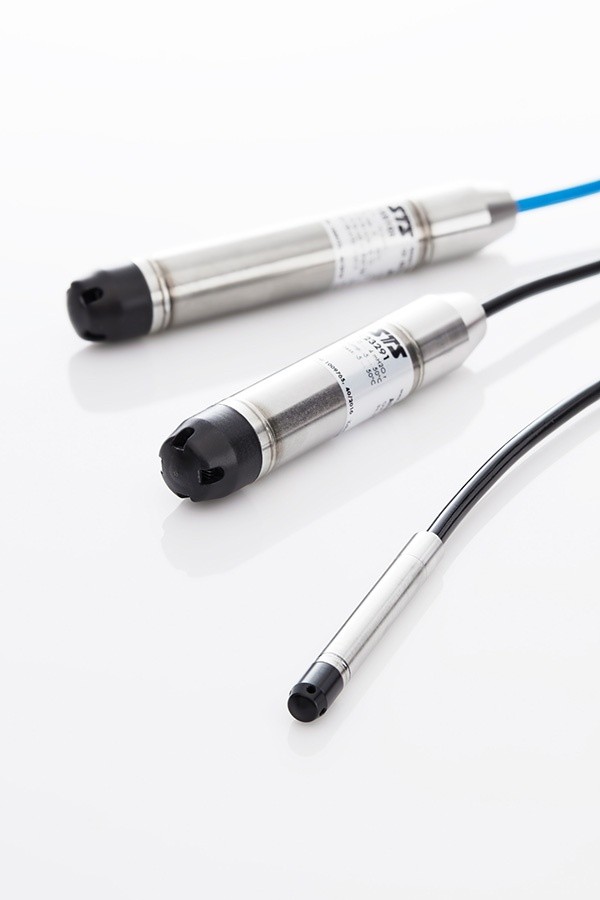
Water in spite of drought
Water management experts at the Karlsruhe Institute of Technology (KIT) have constructed a subterranean dam with an integrated hydroelectric plant inside a karst cavern on the Indonesian island of Java. The power station located 100m below ground now provides plentiful water from the cavern during the dry season. Two data loggers installed there measure the water levels both in front of and behind the dam wall. The level of the upper water reaches 15 – 20m, while the lower level, where water discharges again from the turbine, attains a maximum of 2m.
The karst area of Gunung Kidul on the south coast of Java is one of the poorest regions in Indonesia. The ground is too barren for a bountiful supply and in the dry season the flowing waters actually run dry. Water from the rainy season peters out quite quickly, but does collect within an underground cave system. This natural water reservoir has now been harnessed with a cave power station. The fact that even in the dry season over 1,000 liters of water per second flows through the Bribin Cave speaks for the ideal location of this dam. Instead of complex turbines, the mechanical energy to drive the feed pumps is generated by reverse-driven circulation pumps. The five parallel-operating feed pumps are thus highly cost-effective, incurring only minor operating and maintenance costs. The supply pumps send part of the water 220m high to a lake named Kaligoro Reservoir situated upon a mountain. The key stumbling block to this project was successfully overcome during the test damming phase. The cave did effectively hold the water and a crucial dam height of 15m was indeed achieved.
In March 2010, the installation was then handed over to the Indonesian authorities. It can now provide 80,000 people with up to 70 liters of water per day. Previously, the populace had only 5 – 10 liters available per day during the dry season, for personal hygiene, household and livestock purposes. Incidentally, each German uses on average 120 liters per day, for comparison.
Function of the pressure data loggers
The pressure loggers measure the water levels in front of and behind the dam wall. The normal level amounts to 15m, but it can reach up to 20m during heavy rainfall. The other probes measure the water level whilst submerged, in particular where water discharges from the turbine. Levels of up to 2m are recorded in this area. The pressure loggers from STS were chosen due to their high overload capacity of 3x their full-scale range, the low characteristics deviation of maximal 0.1% and an enhanced long-term stability of between 0.1 % und 0.5 % FS per annum.
These level loggers cover pressure ranges between 0 – 100 mbar and 0 – 600 bar, thus permitting level measurements in the ranges of 0 – 100 cmAq to 0 – 6,000 mAq. The measurement interval itself is variable between 0.5s and 24h. The units are further distinguished by a measurement data memory of up to 1.5 million measured values and a narrow probe diameter. Additionally, their standard lithium batteries can be swapped out on site in no time at all.
Variable data-saving intervals dependent upon pressure or time permit for flexible measurements. With the use of various materials like stainless steel, titanium, PUR, PE or Teflon cable, a high medium tolerance is achieved, allowing for the most varied of applications. Besides the level recordings of groundwater, wells, boreholes, lakes and rivers, these level loggers are also suited to leak testing in gas, water and other pipeline projects, as well as pipeline analysis and pressure testing in gas, water and community heating pipeline networks. They have also proven themselves optimally in gas pressure control stations and in the verification of a constant supply pressure.
Sources: Karlsruhe Institute of Technology (KIT) – Institute for Water and River Basin Management (IWG)

